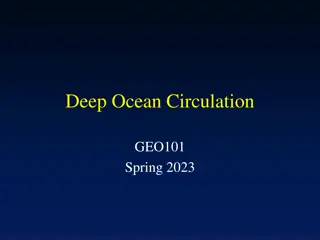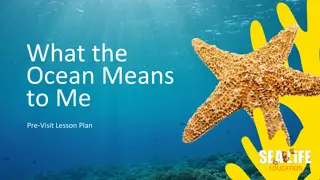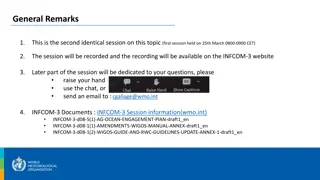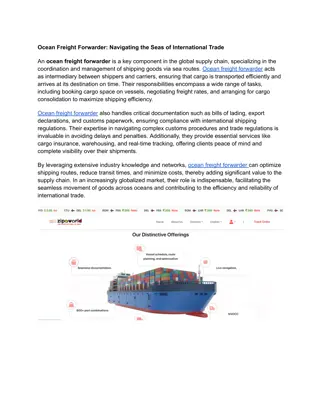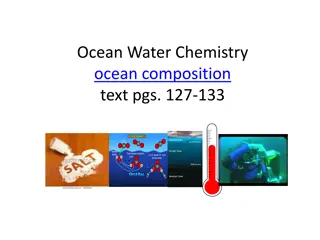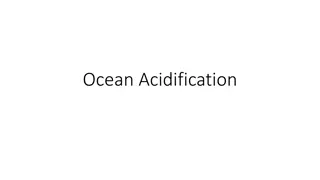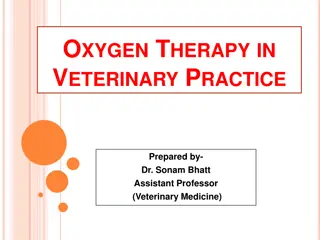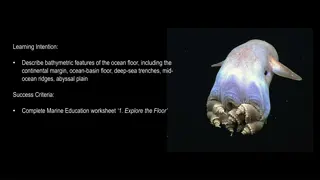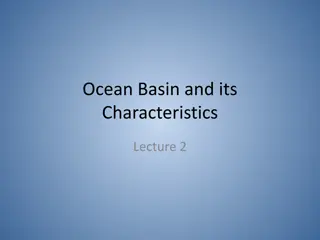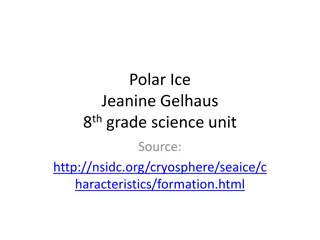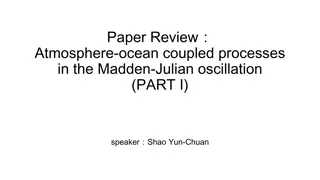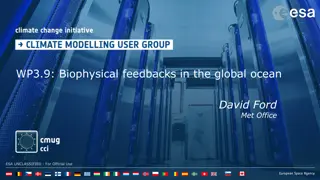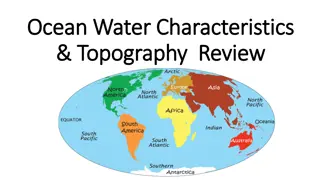Addressing Ocean Hypoxia Through Innovative Solutions
Reversing ocean hypoxia requires a paradigm shift towards cyclic nutrient use, increased efficiency in fertilizer use, and enhanced nutrient recovery from waste. The socioeconomic impacts of excess nutrients on marine ecosystems are substantial, highlighting the need for new partnerships and technological innovations. By addressing these challenges, we can protect global food security and mitigate the damaging effects of hypoxia on our oceans.
Download Presentation

Please find below an Image/Link to download the presentation.
The content on the website is provided AS IS for your information and personal use only. It may not be sold, licensed, or shared on other websites without obtaining consent from the author. Download presentation by click this link. If you encounter any issues during the download, it is possible that the publisher has removed the file from their server.
E N D
Presentation Transcript
Reversing Ocean Hypoxia through Application and Scaling up of Innovative Policy, Economic and Financial Tools Andrew Hudson Head, UNDP Water & Ocean Governance Programme & UN-Oceans Coordinator
Haber-Bosch Process 1909 Atmos N2+ Natural Gas -> Fertilizer
Addition of new reactive nitrogen to earth system increased by 150%; cumulative addition 2 billion mt N
Parallels between perturbation of Earth s Carbon & Nitrogen Cycles Carbon Nitrogen We are systematically mining hydrocarbons from the earth about 1 million times faster than it took natural processes to put them there. We are systematically mining nitrogen from the earth s atmosphere (non-reactive N2 gas) and converting it into reactive nitrogen 8 times faster than natural processes Atmospheric concentrations CO2increased by 40% due to fossil fuel combustion compared to pre-industrial times Continent to ocean burdens of nitrogen increased 3-fold from pre-industrial times; will rise to 6-9x in BAU scenario 30% of anthropogenic CO2 has dissolved in oceans and already lowered ocean pH by 0.1 unit, 0.3-0.4 units further in BAU Hypoxic areas now number over 400 and increasing geometrically $1.3 trillion/yr in economic damage from climate change on oceans by 2100 in business-as-usual scenario Economic impacts of excess nutrients on oceans already in the many tens of billions of dollars per year Excess CO2is exacerbating environmental and economic impacts of hypoxia Excess nitrogen can convert to powerful greenhouse gas N2O and exacerbate climate change synergy
Socioeconomic Impacts and Costs of Nutrients on Marine Ecosystems $20-70 billion/yr nitrogen impacts in EU alone (ENA) Probably $100 billion/yr or more globally; meaningful drain on economic development Higher dependence in developing world on healthy marine ecosystems for protein, livelihoods, economies $15 billion/year waste nutrients flushed down toilets and from the 2.6 billion without basic sanitation
Whats needed: Paradigm shift from linear to cyclic use of nutrients Dramatic increases in fertilizer use efficiency Enhanced recovery and reuse of nutrients from human and livestock waste streams Presents win/win opportunities for: New public-private partnerships across key sectors (agriculture, fertilizer, wastewater mgmt) Technology and process innovation for nutrient recovery and reuse (Gates Fdn reinvent the toilet ) Likely net job creator vs. destroyer (labor vs. energy/technology (Haber-Bosch) intensive) In long run, can help to safeguard global food security by diversifying sources of nutrients esp. for finite phosphorus
Policy, Economic, Financial Tools & Options EASY MEDIUM HARD Strengthen nutrient management institutional capacity at local, national, regional, global scales Subsidies to good nutrient practices and technology (tertiary treatment, nutrient recovery/reuse, organic/timed fertilizer, etc.) Global nutrients legal framework (building on GPA- LBA) Nutrient emission taxes on point sources (WWTP, industrial sources) Nutrient emissions cap and trade at level of national and/or international river basins Global cap and trade on manufactured fertilizer production Promoting good agricultural nutrient practices at local level (Ag extension services, etc.) Feed-in tariffs for fertilizer recovered from nutrient waste (human, livestock) Global tax on manufactured fertilizer production Catchment level nutrient management plans and budgets National regulations that reduce nutrient pollution (caps on fertilizer/ha, manure management, agricultural buffer zones, point source emission limits, etc.) Global fund to provide guaranteed prices (Feed-In Tariffs approach) for fertilizer sourced from human & livestock waste streams Regional scale nutrient reduction policy/legislation in regional economic blocks (e.g. EU WFD s Nitrates Directive) Climate finance payments to farmers for reducing N2O (a GHG) releases from fertilizer application (Canada)
Examples of nutrient reduction tools in action EU WFD Nitrates Directive, Good Agricultural Practices (timing, conditions, caps/ha fertilizer application, etc.) EU Common Agri Policy subsidies to organic farming Long Island Sound (US - CT) cap & trade on point source emissions Chesapeake Bay voluntary cap and trade on pt and non pt sources (3 states principles , 1 (PA) operational pgm) Farm Nutrient management budgets (US, Europe, Australia, New Zealand, Canada ) Small Grants for nutrient reduction Danube GEF Fertilizer taxes (Finland, Sweden, Norway) limited impact? Local subsidies/incentives for nutrient recovery & reuse Gates Foundation reinvent the toilet , S. Africa 400,000



